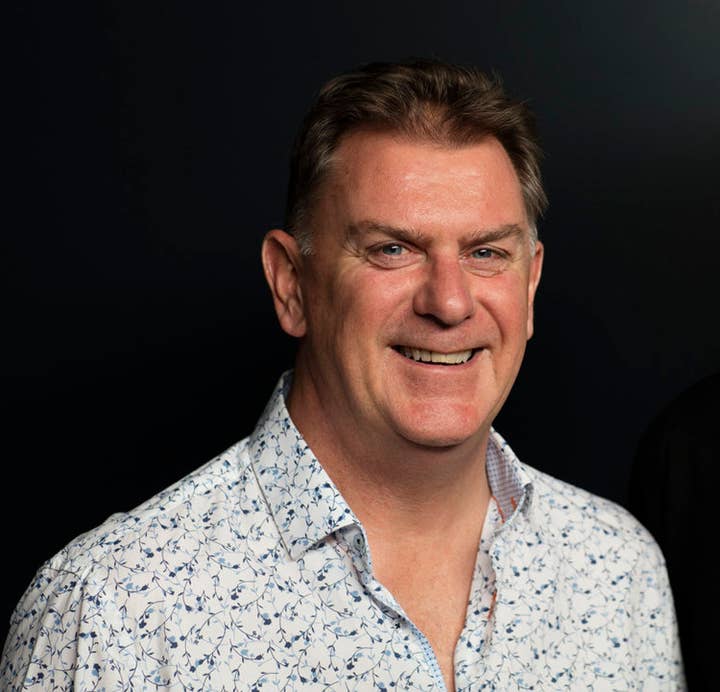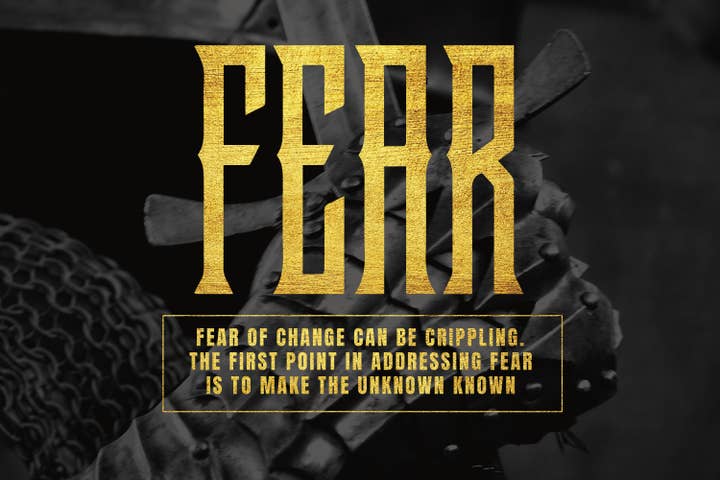Luck is a failing strategy for developers | Opinion
Leverage Partnership's David O'Connor shares a cautionary tale about indies whose first game was a smash hit
I have worked across multiple sectors but in game development there is a repeated story emerging that makes gaming different: the luck trap. I am going to tell you the story.
To protect the innocent, I will use fake names and game titles.
Simon and Tom, two college buddies with a passion for gaming, devoted all their spare time developing a game that expressed their love of medieval history and sword combat. It became all consuming. Their self-published game, Toledo, named after the medieval sword makers of the same name, was an immediate hit amongst the medieval loving community.

Before long, they were eight guys bound together by the love for the game with great ideas for the next. They were also bound by a lease, salaries, overheads and a very demanding fanbase: something they had not really signed up for. They missed the chaos and freedom of start-up days, where they were accountable only to themselves, where creativity was intuitive and fluid and where pleasing others was not a thing. This was the unspoken rule after all. However, the beast needs feeding so they went back to the well of ideas to develop a new game.
But the next game bombed.
Then Toledo plateaued and started declining.
Then they launched Toledo Royal, an attempt to broaden the Toledo appeal, and got flamed by their loyal fans as sell-outs.
The problem for Simon and Tom is that their first success was just pure luck -- they hit the jackpot without knowing why. And this created what seemed like a precedent of what was to come; they expected every shot they took to hit. This did not play out.
The indie tipping point
Faced with this situation Simon and Tom came to the realisation that without investment they could not take the game to the level it needed and to reach broader audiences.
The deadliest misconception is thinking luck will repeat itself. This is the premise upon which a huge industry is built: it is called gambling
They knew that they had to leave the start-up chaos behind and build a company with a sustainable future. They needed to partner in order to do that. They had reached the indie tipping point: a point where it is not sustainable to rely on luck, where change is required, and where they face a scary, uncertain future.
Understanding the luck trap
The deadliest misconception is thinking that luck will repeat itself. This is the premise upon which a huge industry is built. It is called gambling, where irrespective of the rare but much publicised pay-outs, the house always wins.
You can leave luck to chance when the stakes are low but when in business, where the stakes are high, luck demands a lot of sweat and preparation. Like a lot of things in life that look easy: they rarely are. Truth is, luck happens to those who are most ready for it. As the Roman philosopher Seneca once said, "Luck is what happens when preparation meets opportunity."

The problem for some developers is that this goes against the artistry of their origins and that sucks because they are now running a business where sustainability and artistry have to live hand in hand. Sustainability however does not have to detract from your artistry. It just means looking at things differently. For Simon and Tom, it meant juggling the dual challenge of building a company for their employees whilst maintain artistic integrity.
So what could they do?
The biggest fear of change is uncertainty, not knowing what lies ahead. There are many books written on the subject, all of which agree that fear of change can be crippling and that the first point in addressing fear is to make the unknown known. You have to take control of your own destiny.
Pro Tip 1: Define your creative core
Central to making the unknown known is defining your creative core: that which informs not just who you are but how you create games, how and why you build your IP -- and how you project and protect your brand. This creative core will become both your sword and your shield while you forge your own path as a company, and protect what is important to you creatively.
The problem with doing everything yourself is you're way too close to understand how to simplify all that genius into something that can be effectively marketed
The logic behind making the unknown known and controlling your own destiny is simple: get together and work out what is important to you, imagine possible futures and map those against what is important to you. Look at the possible compromises you may have to make and assess them in relation to what is important. Realistically. And establish the red lines, define what is not up for compromise. This may mean bringing in an outside facilitator.
Pro Tip 2: It is okay to be stubborn
The biggest fear expressed by the Toledo team, was loss of creative control. But this was actually a symptom of a larger problem; for them, developing the game was a personal expression. Development was centred more on how and why they create games as opposed to for whom, resulting in a stubborn resistance to outside influence; a resistance to what they perceived to be market-led creativity.
Stubbornness is in any parlance a negative trait, but if focused, grounded and reasoned it becomes a strategic asset. The best brands are single-minded exploits of purpose, of creativity. Protecting that creativity requires understanding and nurturing. When you achieve this, two things can happen: you can engage in creative-led marketing and your brand becomes an amplification of your creativity. This is the power you gain through establishing your creative core.
Pro Tip 3: Take a look from the outside in
Making the unknown known by exploring and defining your destiny, then establishing your core can be liberating and a really good foundation for building a sustainable business. But without market context, you are still playing the luck game. You have one huge unknown yet to unravel.
It makes sense that if you want to sell something, you stand a significantly better chance if you know to whom you are selling, what is compelling to them and why. This way you are best positioned to communicate aspects of your game that are relevant to them and help them navigate what you have to offer from their perspective. If you understand what they enjoy, and why, you can communicate with impact and enrich the experience.
Even the first step of identifying your own assumptions about your customers is a very valuable one. At the very least, you will pull together what you know and assume, to create a base to work from. Most likely it will highlight gaps and inconsistencies, which is also valuable. You can then work to test those assumptions and fill the gaps.

Pro Tip 4: Don't assume gameplay is your marketing proposition
Coming back to Toledo, their predominant assumption was that their customers are motivated by gameplay and therefore gameplay should be front and centre of marketing. It seemed completely natural to them because they were so immersed in making the game.
Imagine possible futures and map those against what is important to you. Look at the possible compromises you may have to make and assess them in relation to what is important.
However, a different dynamic comes into play when you want to appeal beyond early adopter audiences. They need to be engaged differently, they need more immediacy and emotional connection. And they need simplicity. They do not want to have to work hard to decipher what you have to offer. If you want to appeal to a mass audience, you need your game proposition to be clear, impactful and emotionally compelling to them. You need to take a look at your game from their perspective.
Pro Tip 5: Let the outside in
If you want to reduce the risk and improve your odds you to need to remove your subjectivity. You need an objective viewpoint, otherwise you will move in ever decreasing circles. Accepted norms need to be challenged. Assumptions need to be challenged. Established ways of doing things need to be challenged. This can be very hard to do in-house when you are so close to the game.
The problem with doing everything yourself is that those who create the game are way too close to the mechanics and technical aspects of the game to understand how to simplify all that genius into something that can be effectively marketed. This is a very specialist discipline.
If you are to make the unknown known effectively, or unearth insights to underpin your positioning to a new market, you are most likely going to need help. And if you are going to craft your marketing with the right level of impact, you are most likely going to need help. This is a real challenge that indies face at the tipping point. A challenge that becomes so much easier to manage and control if you take the time to remove the scary unknowns and establish what is important to you as a company and creatively.
This is the journey that Simon and Tom are on. Success will be determined by many different factors, but one thing is for sure, they are now managing the odds and making their own luck.
Summary
Luck can be a cruel mistress. The challenge for indies is not to fight the outside but to take control of your own destiny, improve your odds by defining the unknowns and leverage the outside. This will give you to give you an objective perspective and a better understanding of your audience so that you can connect with what engages them emotionally, with impact.
Good luck.
David O'Connor is a co-founder and head of brand strategy at Leverage Partnership, a company that specialises in helping game studios develop their IP and franchises.
